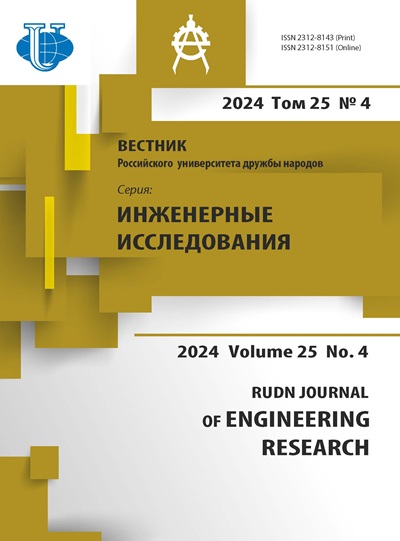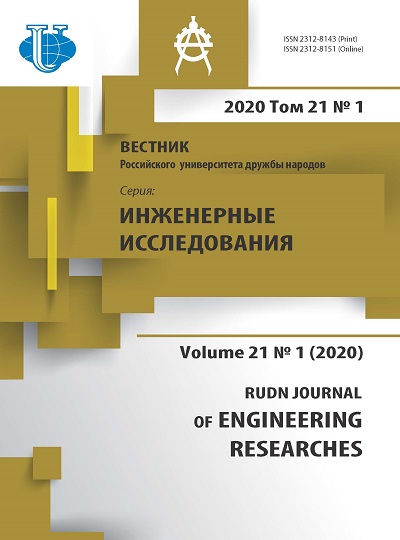Баритсодержащие радиационно-защитные строительные материалы
- Авторы: Новиков Н.В.1, Самченко С.В.1, Окольникова Г.Э.2
-
Учреждения:
- Национальный исследовательский Московский государственный строительный университет
- Российский университет дружбы народов
- Выпуск: Том 21, № 1 (2020)
- Страницы: 94-98
- Раздел: Строительство
- URL: https://journals.rudn.ru/engineering-researches/article/view/24656
- DOI: https://doi.org/10.22363/2312-8143-2020-21-1-94-98
Цитировать
Полный текст
Аннотация
Благодаря активному развитию отраслей, использующих ядерные технологии, все больший интерес вызывает создание высокоэффективных и экономически выгодных строительных материалов для защиты от опасных ионизирующих излучений. Широкое распространение в области радиационно-защитных строительных материалов получили баритсодержащие бетоны. Целями данной работы являются установление перспективности их применения на объектах атомной промышленности, а также поиск способов улучшения их технических и эксплуатационных характеристик. Для этого был проведен анализ актуальной литературы и научных исследований в области радиационно-защитных материалов и, в частности, баритсодержащих бетонов. Среди преимуществ баритсодержащих бетонов отмечают высокие радиационно-защитные свойства, экологичность, высокую плотность, экономические показатели. Из недостатков выделяют высокую подверженность усадочным деформациям и слабую устойчивость к циклическим температурным воздействиям. Добавление барита в состав бетона позволяет увеличить коэффициент линейного поглощения γ-лучей материала, а при грамотном подборе состава такой материал может обладать прочностными характеристиками равными или превосходящими характеристики бетонов стандартных составов. Баритсодержащие материалы имеют широкую область применения и могут использоваться как для производства тяжелого бетона при устройстве несущих и ограждающих конструкций, так и при создании отделочных радиационно-защитных покрытий стен и полов.
Ключевые слова
Полный текст
Введение[‡‡‡‡‡] В современном мире ядерные технологии являются широко востребованными во многих отраслях промышленности. Наиболее активно использующей и развивающей эти технологии отраслью является ядерная энергетика. Согласно данным World Nuclear Industry Status Report, в 2018 году ядерная энергетика составляла 10,18 % от общей доли производства электроэнергии в мире, в России этот показатель составил 17,9 %. По данным на начало 2020 года количество действующих ядерных реакторов составляет 414, из них 38 на территории России. В стадии строительства находятся 49 атомных электростанций, в том числе 3 на территории России: Курская АЭС - 2, Ленинградская АЭС - 2, Плавучая атомная теплоэлектростанция г. Певек (Чукотский автономный округ) [1]. В соответствии с государственной программой «Развитие атомного энергопромышленного комплекса» ожидается, что к 2027 году объем выработки электрической энергии атомными электростанциями, расположенными на территории России, составит не менее 221,7 млрд кВт·ч в год [2]. Однако, как известно, использование ядерных технологий требует эффективной защиты как человека, так и окружающей среды от опасных последствий. По этой причине и на фоне активного развития атомной промышленности все больший интерес вызывает создание высокоэффективных и относительно дешевых радиационно-защитных материалов. 1. Ионизирующие излучения и радиационно-защитные материалы Существует два вида ионизирующих излучений: электромагнитные и корпускулярные. Электромагнитные ионизирующие излучения представляют собой поток фотонов с чрезвычайно малой длиной волны, к ним относятся рентгеновское излучение, γ-излучение и тормозное излучение, возникающие при прохождении через вещество сильно ускоренных заряженных частиц. Корпускулярное излучение представляет собой пучки ядерных частиц, ядер элементов или ионов. Это могут быть либо заряженные электроны, протоны и ионы, либо не имеющие заряда ядерные частицы - нейтроны. Наибольшую опасность представляют частицы и кванты, обладающие высокой проникающей способностью, а именно рентгеновское излучение, γ-излучение и быстрые нейтроны. Проникающая способность электромагнитных видов ионизирующих излучений в материале в большей степени зависит от плотности и состава этого материала. Наиболее эффективно электромагнитные ионизирующие излучения ослабляются при столкновении с элементами, обладающими высокими атомными номерами. По этой причине для защиты от рентгеновского и γ-излучений целесообразно использовать бетоны на тяжелых заполнителях, таких как барит, железная руда, лимонтит, магнетит, металлический скрап и т. п. [3]. Высокая проникающая способность нейтронов обуславливается отсутствием заряда, вследствие чего они не взаимодействуют с электронами атомных оболочек и беспрепятственно проникают вглубь атомов. При столкновениях с атомами тяжелых элементов происходит упругое отталкивание, в результате которого нейтрон практически не теряет энергии, однако при столкновении с почти равными им по массе ядрами водорода - протонами - энергия нейтрона уменьшается в среднем вдвое, передаваясь протону отдачи [4]. Исходя из этого перспективно использование в качестве искусственной добавки для радиационно-защитных бетонов компонентов, способствующих образованию кристаллов эттрингита. Эттрингит является высокосульфатной формой гидросульфоаллюмината кальция 3CaO∙Al2O3∙3CaSO4∙32H2O [5]. Перспективность его использования определяется наличием в этих кристаллах большого количества химически связанной воды, что может способствовать замедлению быстрых нейтронов. 2. Баритовые бетоны Бетоны, содержащие в своем составе барит, получили широкое распространение в области радиационно-защитных материалов. В качестве сырья для радиационно-защитных бетонов используется баритовая руда. В состав баритовой руды входят минерал барит BaSO4, кремнезем SiO2, оксиды железа Fe3O4, оксид алюминия Al2O3, оксид магния MgO и оксид кальция CaO [6]. Плотность баритовых бетонов составляет от 2,7 до 3,8 т/м3, прочность на сжатие 16-30 МПа, на растяжение не более 3 МПа [6-9]. К преимуществам, по сравнению с другими материалами для защиты от ионизирующих излучений, следует отнести тот факт, что, в отличии от свинца, барит безвреден для человеческого организма и окружающей среды [10; 11], а среди материалов, включающих элементы с большими атомными номерами, является экономически выгодным. Еще одно важное преимущество барита - отсутствие вторичных гамма-излучений высоких энергий, которые могут возникать при поглощении нейтронов ядрами атомов [12]. Среди недостатков бетонов c баритовыми наполнителями и заполнителями отмечают высокую подверженность усадочным деформациям и слабую устойчивость к циклическим температурным воздействиям, обусловленную неодинаковым по кристаллическим осям температурным расширением dx = 19·10-6 К-1; dy = 22·10-6 К-1; dz = 35·10-6 К-1 [6; 7; 12]. Использование барита в качестве наполнителя и заполнителя для тяжелых бетонов активно исследуется учеными со всего мира. Чаще всего при исследовании баритовых бетонов предлагается частичная или полная замена кварцевого песка на баритовый в качестве мелкого заполнителя в составе бетонной смеси. При этом наблюдается прирост величины коэффициента линейного поглощения γ-лучей до 19 % [13-15], однако частичная замена кварцевого песка в объеме 40 % на баритовый позволяет добиться защиты как от γ-лучей, так и от нейтронного излучения. Что касается механических характеристик бетонов на баритовом песке, то присутствуют незначительное снижение прочности на сжатие и практически двукратное снижение прочности на изгиб, но при грамотной оптимизации состава возможно добиться показателей, равных или превосходящих показатели бетона на кварцевом песке [16]. Например, в составе с добавлением 5 % нанокремнезема прочность бетона на баритовом заполнителе на сжатие и изгиб была выше на 4 и 17 % соответственно, чем для бетонов на кварцевом песке [17]. Помимо использования барита в качестве наполнителя и заполнителя тяжелых бетонов, подтверждена эффективность сухих строительных смесей для нанесения в виде штукатурки или напольного покрытия на внутренние или наружные поверхности экранируемого помещения [18; 19]. Заключение Баритовые бетоны нашли широкое применение в области радиационно-защитных материалов благодаря экологичности, экономическим показателям и защитным свойствам. Несмотря на очевидные недостатки, баритовые бетоны остаются перспективным материалом, востребованным на объектах активно развивающейся атомной промышленности.
Об авторах
Николай Владиславович Новиков
Национальный исследовательский Московский государственный строительный университет
Автор, ответственный за переписку.
Email: okolnikova-ge@rudn.ru
аспирант 1-го курса кафедры «Технология вяжущих веществ и бетонов» НИУ МГСУ
Российская Федерация, 129337, Москва, Ярославское шоссе, 26Светлана Васильевна Самченко
Национальный исследовательский Московский государственный строительный университет
Email: okolnikova-ge@rudn.ru
профессор кафедры «Технология вяжущих веществ и бетонов» НИУ МГСУ, доктор технических наук, профессор
Российская Федерация, 129337, Москва, Ярославское шоссе, 26Галина Эриковна Окольникова
Российский университет дружбы народов
Email: okolnikova-ge@rudn.ru
доцент департамента строительства Инженерной академии РУДН, кандидат технических наук, доцент
Российская Федерация, 117198, Москва, ул. Миклухо-Маклая, 6Список литературы
- Froggatt A. et al. World Nuclear Industry Status Report. 2019. 323 p.
- О внесении изменений в государственную программу Российской Федерации «Развитие атомного энергопромышленного комплекса»: постановление Правительства РФ от 16.03.2020 г. № 289-13 // КонсультантПлюс. URL: http://www.consultant.ru/document/cons_ doc_LAW_348194 (дата обращения: 11.04.2020 г.).
- Баженов Ю.М. Технология бетона. М.: Изд-во Ассоциации высших учебных заведений, 2002. 500 с.
- Лаптев Г.А. Радиационные защитные свойства металлобетонов // Предотвращение аварий зданий и сооружений. 2009. URL: https://prevdis.ru/radiatsionnyezashhitnye-svojstva-metallobetonov (дата обращения: 11.04.2020 г.).
- Самченко С.В. Роль эттрингита в формировании и генезисе структуры камня специальных цементов. М.: Изд-во Рос. хим.-технол. ун-т им. Д.И. Менделеева, 2005. 154 с.
- Чан Ле Хонг. Особотяжелый самоуплотняющийся бетон на баритовом заполнителе: дис. … канд. тех. наук. М.: МГСУ, 2011. 121 с.
- Королев Е.В., Прошин А.П, Баженов Ю.М., Соколова Ю.А. Радиационно-защитные и коррозионно-стойкие серные строительные материалы. М.: Палеотип, 2006. 272 с.
- Прошин А.П., Демьянова В.С., Калашников Д.В. Особо тяжелый высокопрочный бетон для защиты от радиации с использованием вторичных ресурсов: монография. Пенза: ПГАСА, 2004. 140 с.
- Комаровский А.Н. Строительство ядерных установок. М.: Атомиздат, 1969. 503 с.
- Васильев А.А., Шангина Н.Н. Физико-механические основы нетвердеющих минеральных дисперсий для санации металлических элементов подземных сооружений // Фундаментальные исследования. 2016. № 7-1. С. 14-18.
- Рабощук Д.С. Теоретические основы при создании высокоэффективных радиационно-защитных материалов для защиты от ионизирующих излучений // Международная научно-техническая конференция молодых ученых БГТУ имени В.Г. Шухова (Белгород, 1-30 мая 2015 г.): сборник трудов. Белгород: Белгородский государственный технологический университет имени В.Г. Шухова, 2015. С. 340-343.
- Калашников В.И., Демьянова В.С., Калашников Д.В., Махамбетова К.Н. Оптимизация состава особо тяжелого высокопрочного бетона для защиты от радиации // Строительные материалы. 2011. № 8. С. 25-28.
- Saidani Kh., Ajam L., Ben Ouezdou M. Barite powder as sand substitution in concrete: Effect on some mechanical properties // Construction and Building Materials. 2015. Vol. 95. Pp. 287-295.
- Akkurt I., Basyigit C., Kilincarslan S., Mavi B. The shielding of γ-rays by concretes produced with barite // Progress in Nuclear Energy. 2005. Vol. 46. Issue 1. Pp. 1-11.
- Akkurt I., Akyildirim H., Mavi B., Kilincarslan S., Basyigit C. Gamma-ray shielding properties of concrete including barite at different energies // Progress in Nuclear Energy. 2010. Vol. 52. Issue 7. Pp. 620-623.
- Gökçe H.S., Yalçınkaya Ç., Tuyan M. Optimization of reactive powder concrete by means of barite aggregate for both neutrons and gamma rays // Construction and Building Materials. 2018. Vol. 189. Pp. 470-477.
- Янкович К., Станкович С.Й., Стоянович М., Бойович Д., Антич Л. Влияние нанокремнезема и типа заполнителя на свойства высокопрочного бетона // Цемент и его применение. 2017. № 4. С. 118-120.
- Черных Т.Н., Перминов А.В., Пудовиков В.Н., Крамар Л.Я. Сухие баритосодержащие смеси для защиты от ионизирующих излучений // Сухие строительные смеси. 2012. № 1. С. 28-29.
- Патент 2388715 Российская Федерация, C04B 28/30, G21F 1/04, C04B 111/20. Сухая строительная смесь / Гончаров Ю.Д., Рыжов А.С.; заявитель и патентообладатель ООО «Альфапол». № 2008142229/03; заявл. 16.10.2008; опубл. 10.05.2010. Бюл. № 13.
















